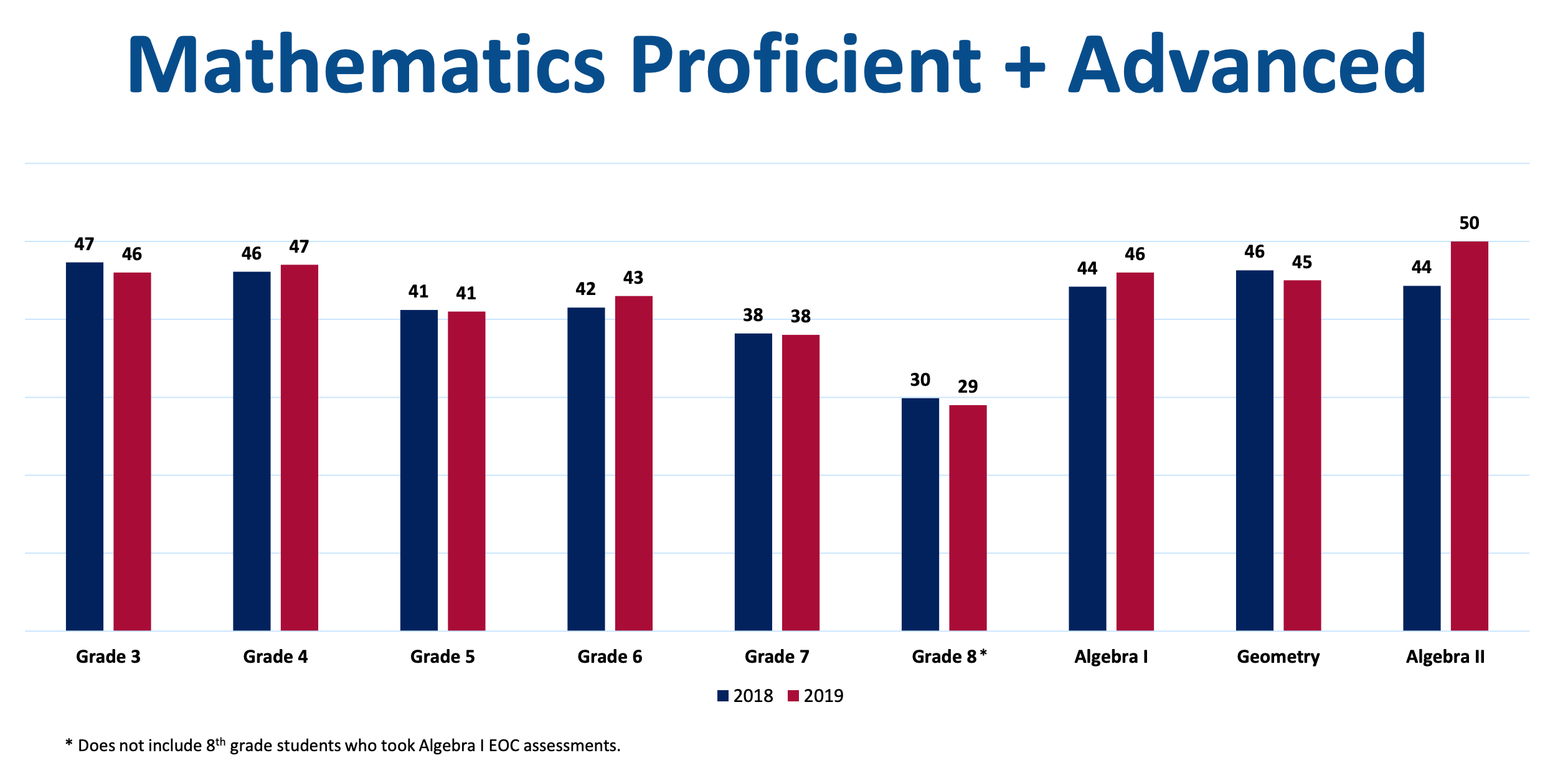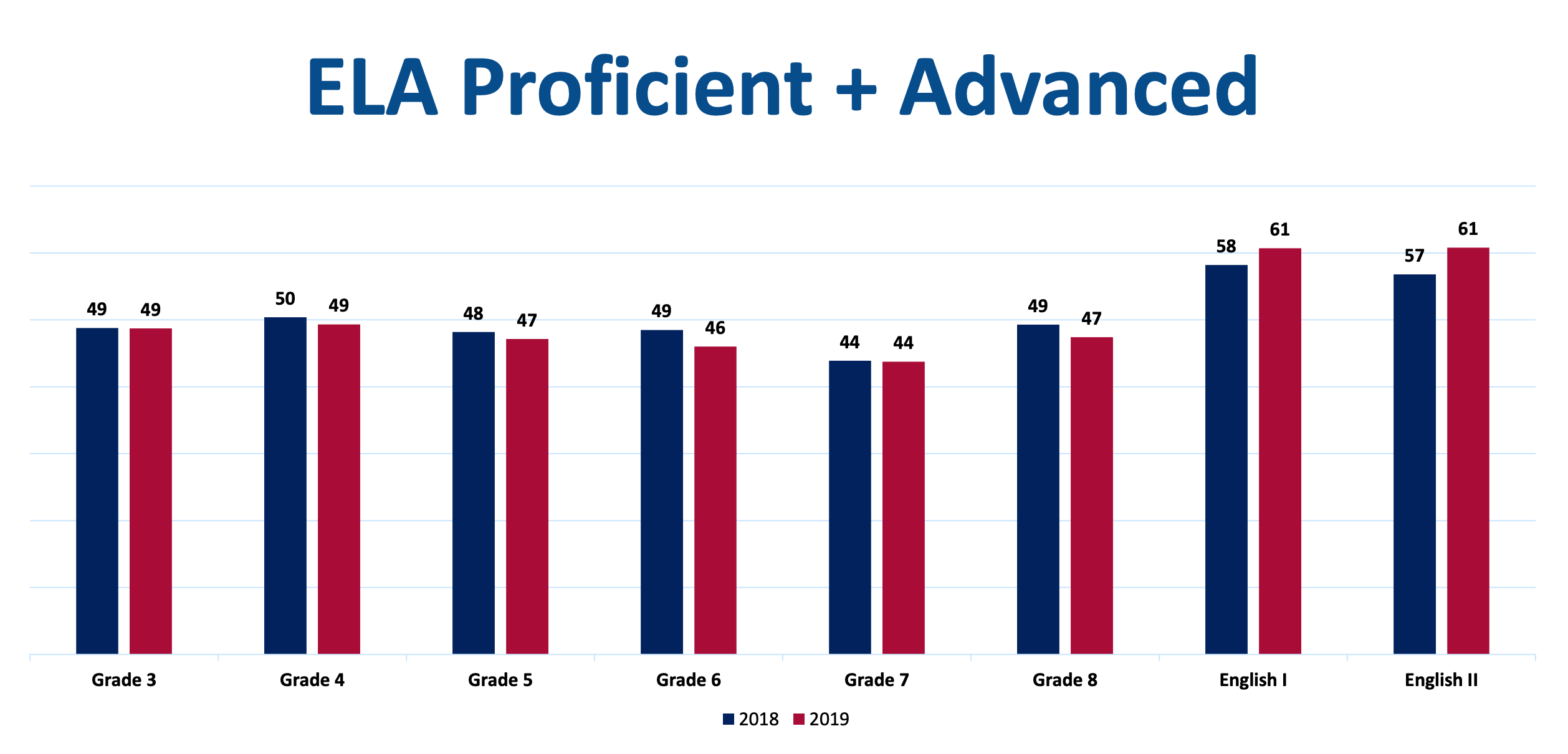Missouri test scores are the same or lower than last year
This week the Missouri Board of Education got a preliminary look at how students did on state tests last year, and the news was not great.
The 2018-19 MAP and EOC scores are the first time in several years where we can accurately compare student performance to previous years.

On math assessments, Missouri students on average performed the same as last year with only 41 percent of students scoring as proficient or advanced.

The news for English Language Arts (ELA) assessments was more depressing with students scoring slightly worse than last year at only 47 percent (compared to 48 last year) of students scoring high enough to be considered as proficient or advanced.
“One of the things we think this says is that we have some work to do in our state, in our districts as far as the standards implementation,” said DESE Standards and Assessment Administrator Lisa Sireno. “We would like to see all of these scores going the other direction, going up. With these very small percentages, we do not know if it is a trend, but that does not mean we will not take it seriously. We are working with curriculum initiatives to help support the district in implementing the standards.”
Putting lipstick on a pig…
Members of the Board of Education seemed to be more concerned with how the state should report results.
“When we report out proficient and advanced, this gets interpreted as half our kids are failing,” said Board President Charlie Shields. “If we did basic, proficient and advanced it would be a way bigger number than just proficient and advanced.
“I am not trying to play with numbers,” he added. “But, how we communicate and report this ends up causing us our own problems.”
Another board member agreed noting:
“If there was maybe more of a definition of what we would expect from the students like ‘basic, proficient and advanced are all passing, they are all doing well they are just three different levels.’ I don’t think when it gets communicated out to external parties that that is clear. They just see basic as maybe borderline.”
Basic is far from passing
DESE does actually provide definitions for the four assessment levels (below basic, basic, proficient and advanced).
The definitions are designed by Missouri teachers, based on the questions on the assessments written by Missouri teachers, and provided to parents and the general public.
According to DESE’s own descriptions, the basic level is literally the definition of borderline, incomplete grade level comprehension. It may not be a completely failing grade, but it is far from passing and students who cannot score above basic clearly need additional instruction.
The definitions vary slightly by grade level and subject matter but what Missouri teachers think the difference between Basic and Proficient is clear.
For ELA, Basic is defined (in part) as, “Students performing at the Basic level on the Missouri Assessment Program demonstrate a partial or uneven command of the skills and processes identified in the Missouri Learning Standards. They demonstrate these skills inconsistently, partially, or with below-grade-level text.”
Proficient for ELA (in part) is defined as, “Students performing at the Proficient level on the Missouri Assessment Program demonstrate an adept command of the skills and processes identified in the Missouri Learning Standards. They demonstrate these skills consistently and skillfully in reading processes in responding to literary and informational text and media (in different genres) and in writing, listening, and speaking forms.”
For math, Basic is defined as, “Basic demonstrate partial proficiency in the knowledge and skills necessary at this grade level/course of learning, as specified in content expectations. The students need additional academic support to ensure success in the next grade level or course and to be on track for college and career readiness.”
Proficient for math is defined as, “Proficient demonstrate proficiency in the knowledge and skills necessary at this grade level/course of learning, as specified in content expectations, and uses clear and precise language when communicating mathematical understanding. The students are prepared for the next grade level or course and are on track for college and career readiness.”
Those distinctions seem pretty clear and seem to be a pretty compelling reason why we should be concerned when only 47 percent of Missouri students can reach a level of proficiency in ELA and only 41 percent of students can reach proficiency in math.
District and (maybe) building level data from the 2018-19 assessments should be available in early October.
« Previous Post: Back-to-school (bureaucracy)
» Next Post: DESE continues effort to block virtual education access